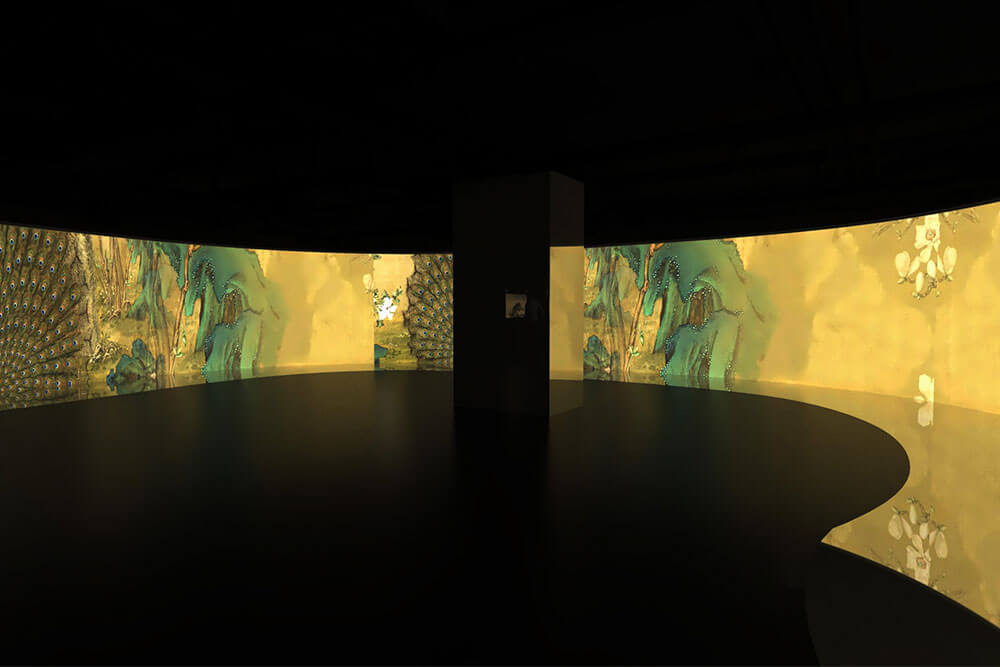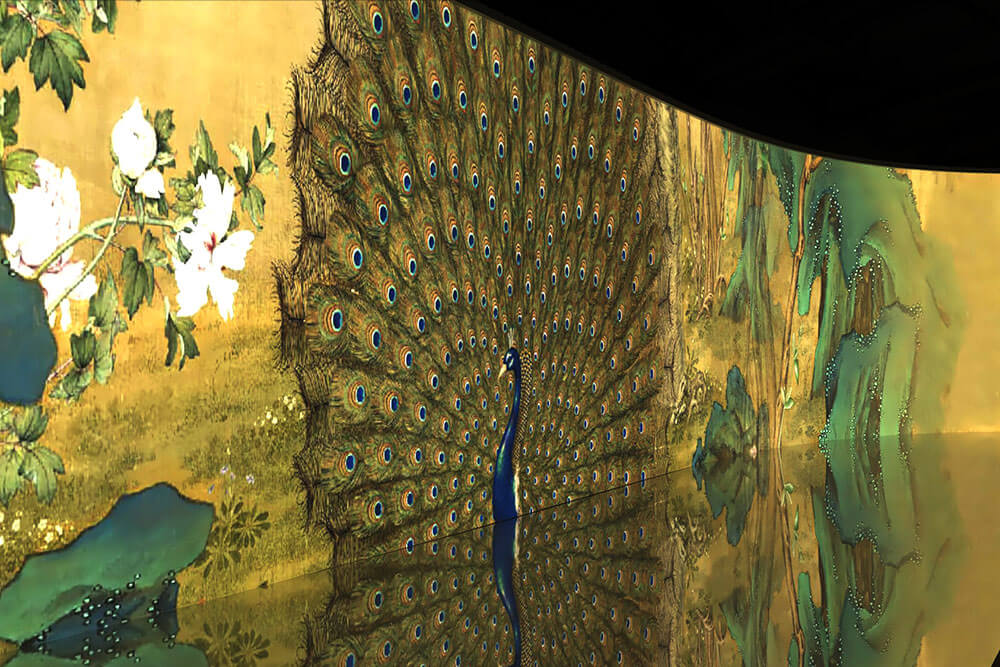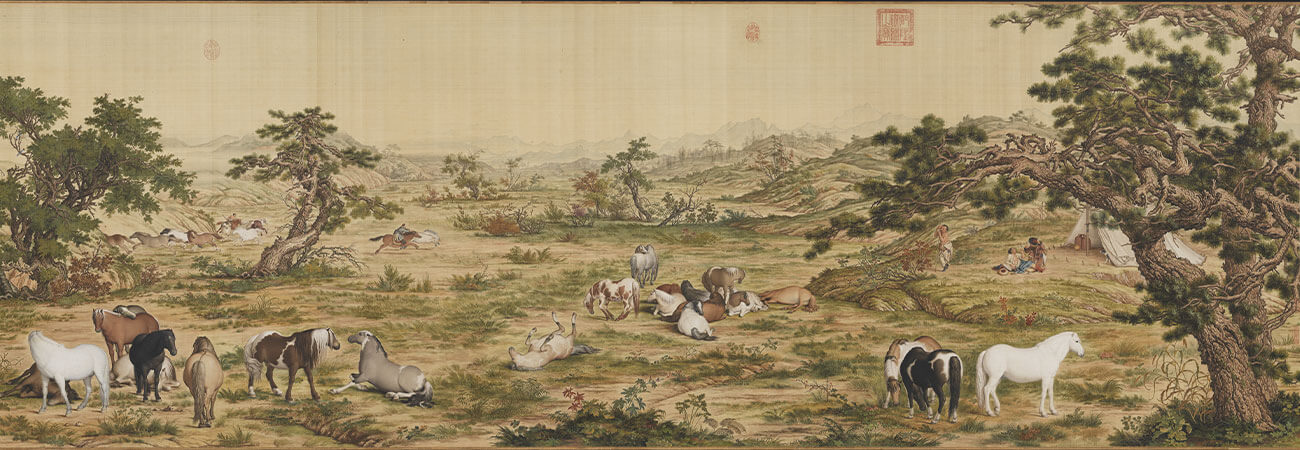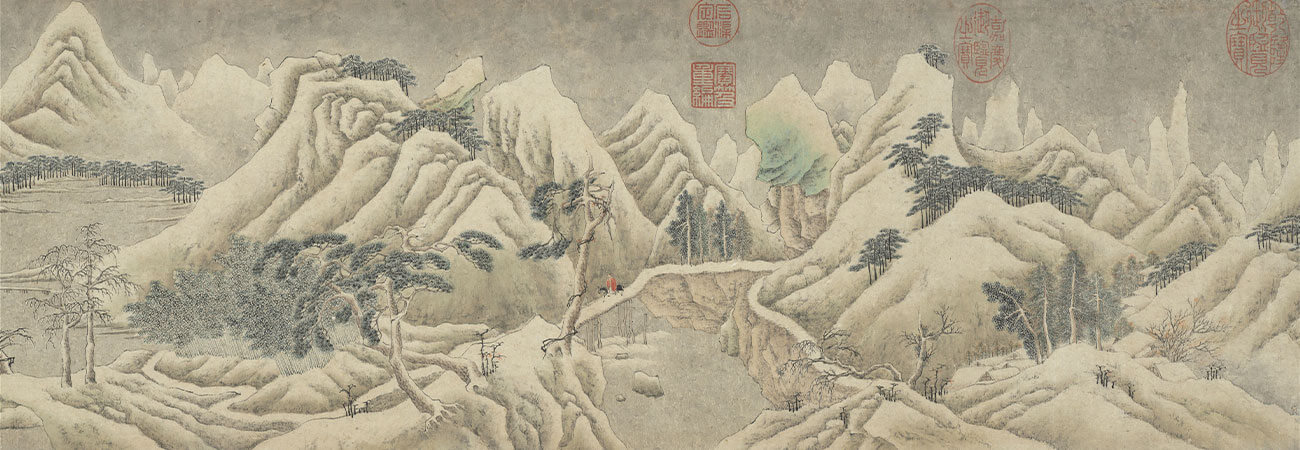Immersive Theater
The themes of Giuseppe Castiglione's eastward journey, his artistic achievements as a long-term Qing court painter, and the changing seasons in landscape paintings will be presented here in the form of dynamic images in this section.
Firstly, the "Trail of Master Painter" repertoire will retrace Giuseppe Castiglione's journey to China, mirroring how this Jesuit missionary played multiple identities and brought a blend of "tradition and innovation" to the field of art.
Secondly, in the "Journey through the Four Seasons" repertoire, we invite the audience to become ancient Chinese painters. Through the utilization of digital technology, visitors can personally experience the immersive scenic landscapes that vividly depict the ever-changing seasons.
This immersive theater expects which features curved semi-surrounding structures, two animated theatrical productions crafted from the museum's collection of paintings, artifacts, and documents are showcased. These productions are accompanied by a rich and awe-inspiring musical score, creating a transformative exhibition experience that seamlessly bridges the past and present. At the conclusion of each performance, high-resolution projections of artwork are also displayed, ensuring that the audience do not miss capturing the moment.
Theme Name: Trail of Master Painter
Run-Time: 8 minutes
Synopsis:
Giuseppe Castiglione (1688-1766), originally an Italian Jesuit missionary, arrived in China with the intention of promoting cultural undertakings and became a court painter serving for royal family.
In terms of artistic creation, Giuseppe Castiglione's introduction of Western classical oil painting techniques brought entirely new content and elements to the Chinese court painters. Simultaneously, Chinese ink wash and flower-and-bird painting styles offered Giuseppe Castiglione a fresh and captivating visual experience. In the end, Giuseppe Castiglione skillfully merged Western painting techniques with Eastern brushwork and composition skills, finally creating artworks that are compatible with Chinese and Western artistic strengths.
This play presents the artistic achievements of East-West cultural exchange, as exemplified by the works of Qing court painter, Giuseppe Castiglione. The play will explain Castiglione's journey from Europe to the Eastern Qing Empire to preach, and how he painted immortal masterpieces in the palace. We cordially invite the audience to enter the royal garden of this "court painter" through Giuseppe Castiglione's eyes.
Theme Name: Journey through the Four Seasons
Run-Time: 8 minutes
Synopsis:
Travel means people who make a journey or to move from one place to another; traveling was not an easy task for the ancients. Therefore, many painters would capture the places they had visited in their artworks, enabling them to relive those experiences when viewing the paintings in the comfort of their home.
The play revolves around the theme of "Journey through the Four Seasons" and showcases five landscape artworks from the museum's collection: Guo, Xi's "Early Spring" (spring), Gao, Ke-gong's "Trees and Hills in Mists and Rain" (summer), Tang, Yin's "Fishing in Reclusion Among Mountains and Streams" (autumn), Wen, Zheng-ming's "Deep Snow in Mountain Passes" (winter), and Huang, Chun-pi's "Image of a Bridge at Guguan" (autumn). These artworks are skillfully utilized to create a more immersive and emotionally resonant experience of the changing seasons in landscape painting.
The production of "Journey through the Four Seasons" breaks down the fourth wall and offers audiences the possibility to step into the paintings. As the viewers' gaze moves, the two-dimensional mountains, boulders, falling flowers, and flowing water seem to be given life and unfold in front of their eyes. With the real-time aerial video and audio, audiences find themselves immersed in the scenic vistas, experiencing the gradual transitions of seasons as if they were physically present.





